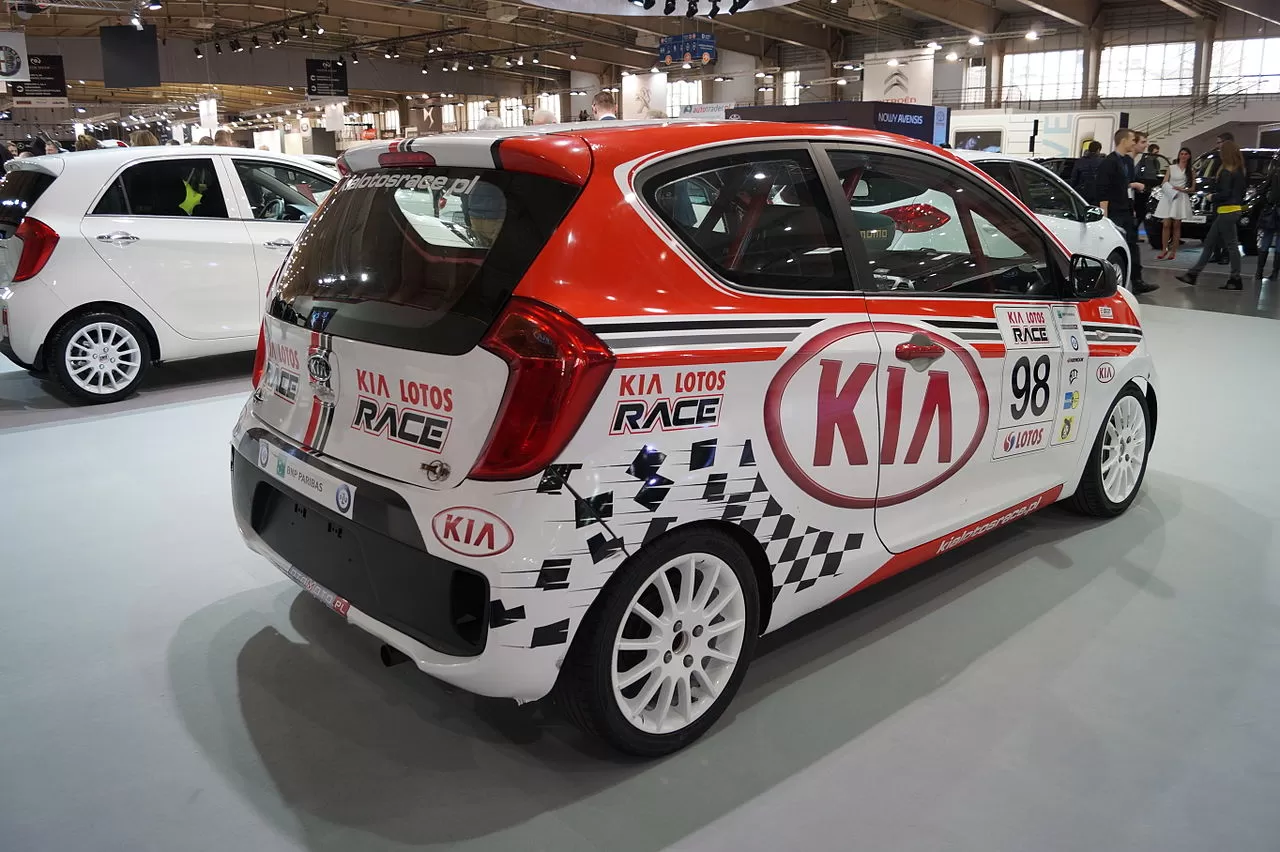
Skoda Citigo G-TEC - city car with factory "gas"
The installation of LPG systems significantly reduces the operating costs of a car with a gasoline engine. There are more than 2,5 million LPG vehicles on Polish roads. Gaz has a group of supporters in Western Europe as well. In some countries, factory-adapted LNG vehicles are popular.
LPG plants supply cylinders with a mixture of propane and butane. The abbreviation CNG stands for Compressed Natural Gas, that is, compressed natural gas. Probably, everyone had contact with methane - gas is the fuel for household stoves.
In Poland, the number of vehicles adapted to run on LNG is negligible. PGNiG estimates that 1700 vehicles are powered by compressed natural gas. This type of solution has been chosen, in particular, by communications companies. The number of methane buses has exceeded the limit of 200. How many individual customers have chosen the CNG plant? PGNiG talks about 700 cars.
Why did CNG fail if a cubic meter of this fuel costs PLN 3,3-3,8, and after buying a suitable compressor, it is possible to fill the car with gas from a home installation, which reduces the cost of 1 m3 of methane to PLN 2,5? CNG cylinders must withstand 10 times the pressure of LPG cylinders. Design requirements are expressed in their high weight and high purchase cost.
Simply put, it can be assumed that the installation of HBO is able to recoup a mileage of 20-30 thousand kilometers. Before the user of a gas-powered car starts to get real savings, he must overcome 40-50 thousand. km.
Natural gas vehicles are environmentally friendly. Combustion of CNG produces trace amounts of particulate matter and sulfur compounds. The emission of nitrogen oxides is reduced by 50-80%. The energy unit of methane contains fewer carbon compounds than other fossil fuels, which reduces emissions of carbon monoxide (up to 80%) and carbon dioxide (by about 20%). Hermetic tank filling system eliminates the release of vapors into the atmosphere during refueling.
Skoda is one of the brands that offer cars with factory installed CNG. The Czech concern offers customers Citigo G-TEC, Octavia G-TEC and Octavia Combi G-TEC. The presentation of the entire range took place in the Netherlands. We decided to check if the Citigo G-TEC is as economical as the manufacturer promises. Skoda says it consumes 4,4 m3 (2,9 kg) of LNG per 100 kilometers. This would mean that you would pay only PLN 100 for a 10 km journey.
The Citigo G-TEC has three fuel tanks - two for CNG and one for gasoline. Gas tanks hold 35 and 37 liters of LNG, which is equivalent to 11 kilograms of methane. The space for the smaller cylinder was freed up by reducing the gas tank to 10 liters. The place after the niche for the spare wheel was taken by a 37-liter gas bottle. There is a repair kit under the trunk floor, and the luggage compartment has increased from 251 to 213 liters.
The changes don't end there. The 1.0 MPI engine has undergone many modifications to optimize the combustion process of the gas-air mixture and guarantee the engine to be in good condition even at high mileage. What changed? The compression ratio was raised from 10,5:1 to 11,5:1, the valves, their guides and seats were strengthened, spark plugs were screwed into the head. The shape of the camshaft cams and the design of the catalyst have also been changed - when methane is burned, a small amount of toxic compounds are formed, which made it possible to reduce the amount of valuable metals in the catalyst liner.
The engine control computer has been reprogrammed. He also obtained algorithms for determining the calorific value of the gas and adjusting the amount of LNG supplied to it. If the coolant temperature exceeds -10°C, the Skoda Citigo G-TEC engine will run on gas. At lower temperatures, it will warm up on gasoline, which usually takes no more than two minutes.
The methane filling valve is hidden under the gas tank hatch. It also used a standard fuel gauge, added a scale for CNG, and shortened the scale for gasoline. The position of the hand indicates the mode of nutrition. The moment of transition from gas to gasoline is chosen by the electronics. The driver cannot interfere with the process.
Driving a Skoda Citigo G-TEC does not differ significantly from driving a Citigo with a conventional fuel system. With a characteristic hum of three cylinders, the car takes off and accelerates efficiently to 70 km / h. Later, there is a slight loss of torque (90 instead of 95 Nm) and an increase in curb weight (956 instead of 857 kg). The sprint from 0 to 100 km/h takes 16,3 seconds. Much, however, does not mean that the Citigo G-TEC will only operate in the city. The maximum speed reaches 164 km / h, so when planning a trip, you do not need to cross motorways and expressways from the route. They are even desirable because overtaking on one-way roads can be quite a challenge. The limited agility of the engine will force it to make frequent downshifts and drop from fifth gear to third.
Engineers, in an effort to ensure good driving performance and reduce the coefficient of aerodynamic drag, reduced the ground clearance of the Citigo G-TEC by 15 mm. The modification slightly worsened the method of damping bumps, but the smallest Skoda still offers acceptable driving comfort.
The manufacturer claims that in the combined cycle, the Citigo G-TEC should use 2,9 kg of methane per 100 km of track. The car burned 150 kg / 3,1 km at a distance of 100 km. In the Netherlands, a kilogram of methane costs 1,095 euros. This means that 100 kilometers of a Citigo petrol engine cost the equivalent of PLN 14.
The Polish representative office of Skoda does not intend to bring the Citigo in the G-TEC version to the domestic market. A modest 30-point network of CNG filling stations makes it very difficult to operate methane-powered vehicles. For comparison, we add that in the much smaller Netherlands, LNG can be purchased at 1300 stations. Prices will also be a factor that effectively limits interest in the model. In Germany, the cheapest Skoda Citigo Active costs 9690 12 euros. The Active G-TEC version costs 640 1300 euros. Skoda delivered the Citigo G-TEC to customers last year. The competition in a seemingly small niche is significant. Those interested can also choose Fiat Panda CNG, Lancia Ypsilon TwinAir EoChic, Seat Mii Ecofuel and Volkswagen up! EcoFuel.
Political factors, more specifically VAT, excises, surcharges and surcharges, have a great influence on the profitability of using vehicles with alternative energy sources. Emissions 79 g CO2/km
and energy class A+ allow the buyer of Citigo G-TEC to take advantage of all possible benefits.

